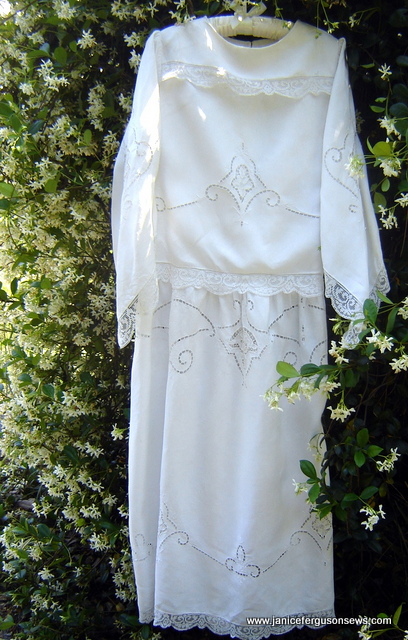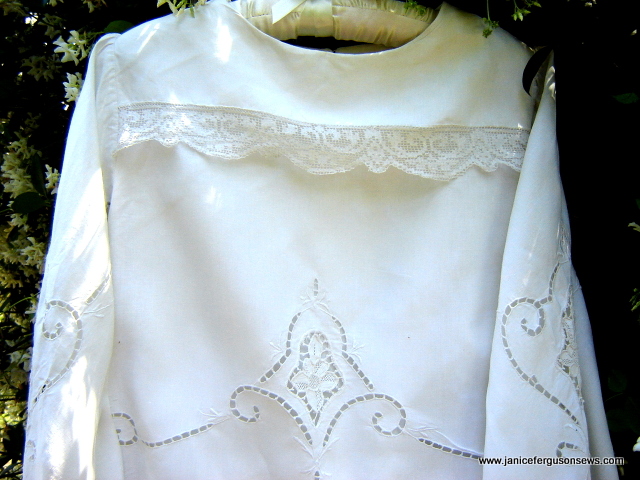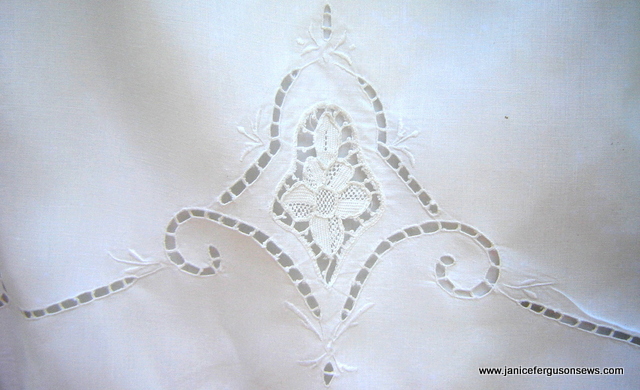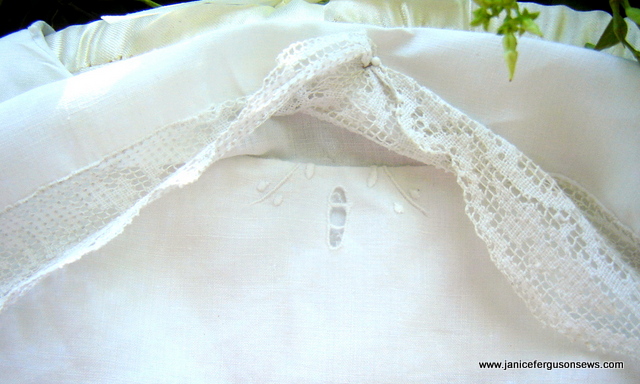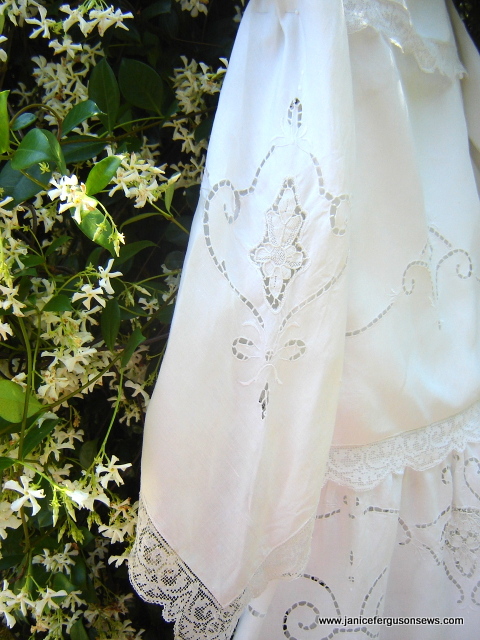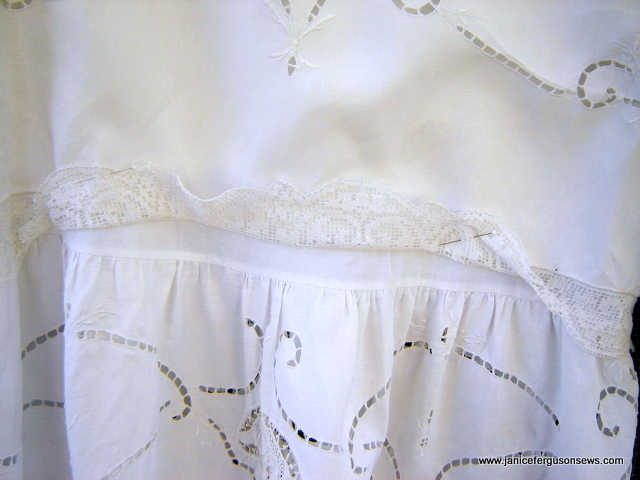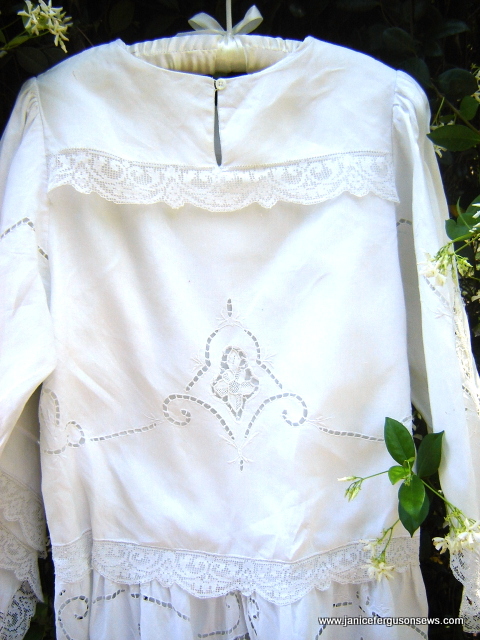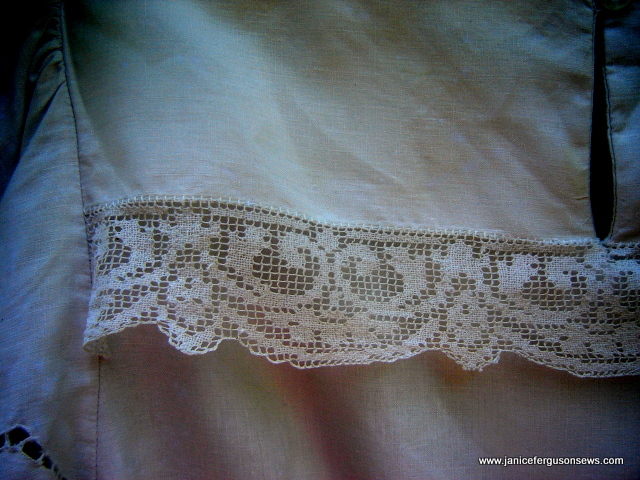This is an amazing dress, an example of what I would call heirloom recycling. Whoever made this dress embraced the “green” philosophy–or simply needed a white dress and had a pretty tablecloth. Whatever.
On a yard sale/church bazaar Saturday outing, a mother/daughter duo came across this dress. Well aware of my penchant for antique textiles, the shopping duo decided then and there to gift it to me.  What wonderful friends! And, of course, I was delighted.
Remarkable for a number of reasons, the dress is made from a beautifully stitched fine linen tablecloth. It was not immediately obvious that the cutwork, surface embroidery and needle lace inserts were not embellishments meant for a special gown.
My first clue that this was a tablecloth was when I discovered the embroidery at the neckline, under the bodice overlay. Hmmmmmmm….no reason to embroider there.
It is pieced together so artfully that the placement of the designs and the needle lace seem well planned for a dress. The skirt was cut so that the cutwork lines up at the side seams. The unusual sleeve style incorporates a corner of the cloth.
At the upcoming mother-daughter church luncheon, a display of vintage wedding gowns and dresses will be featured. So I pulled out the dress and proceeded to launder it. That’s when I discovered the embroidery at the neckline and the non-standard skirt attachment.
Close examination convinced me that the cutwork and embroidery were done by someone other than the seamstress who constructed this garment. There is a noticeable disparity between the workmanship of the handwork and the construction.
This is most noticeable with lace attachment. It is simply straight stitched onto what appears to be a machine rolled and whipped edge at the hem and sleeve edges.
However, on the front and back yoke overlays, which are lined, it is very nicely hand stitched.
It seems to me that the short opening at the center back would make it very difficult to put the dress on. But it’s likely that the seamstress/designer didn’t want break the horizontal line of the lace on the overlay.
Of course, I wonder for what special occasion was the dress made? It could have been a confirmation or graduation dress. It even could have been a wedding dress. Whatever.
Scarlet O’Hara would have found this a welcome, comfortable change from her velvet drapery dress.

